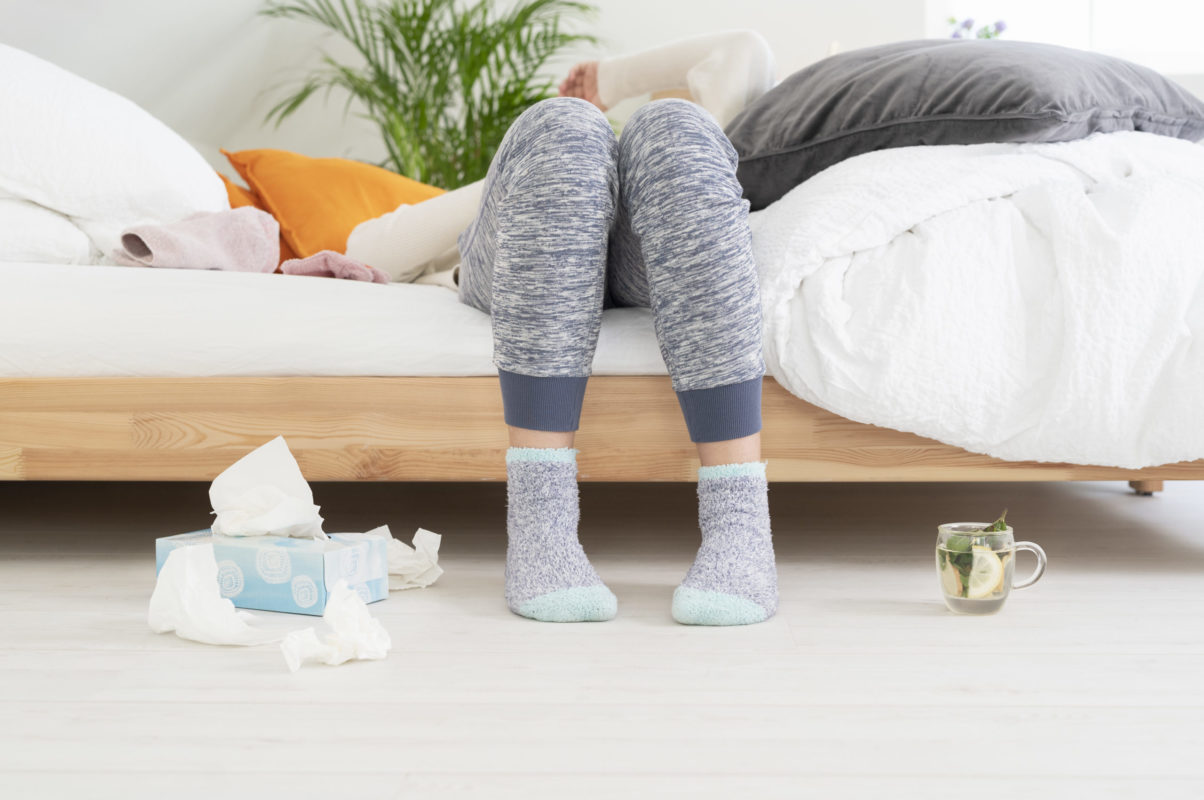These days, it’s easy to assume if we get sick, it’s going to be COVID-19. Yet, we’re also susceptible to illness caused by other viruses, bacteria or fungi.
And you can also get more than one infection at the same time. This is called co-infection.
“’Flurona’ is a recently popular name for having both the flu and COVID at the same time,” explains Dr. Suzanne Corrington, who worked in emergency and internal medicine and is now a medical director for BlueCross BlueShield of Tennessee. “It’s not a new thing, but it’s important to understand what it is and how to protect yourself.”
Find out why you need testing to tell the difference between flu and COVID
What is co-infection?
Dr. Corrington: Simply put, it’s having more than one infection. It doesn’t mean a new disease is created. It means your body is dealing with two different germs at the same time.
How common is it?
Dr. Corrington: Each situation is unique. “Flurona” was something the medical community worried about when COVID first emerged. Last flu season wasn’t bad due to heightened hygiene and social distancing efforts. But Flu cases are rising this year. This opens the door for greater risk of catching COVID and the flu at the same time.
We also have other common viruses floating around. Keep in mind the common cold is usually caused by the coronavirus family. So, you might easily mistake COVID symptoms for “just a cold.”
Who is at risk and how dangerous is it?
Dr. Corrington: Anyone can get a co-infection like “flurona,” even healthy people. But like many infections, those with chronic health conditions are at a higher risk. It’s hard to say for sure how dangerous “flurona” is. But so far research is pointing to having more serious complications.
Keep in mind the flu kills thousands of people every year on its own so it’s important to take it seriously as we have with COVID.
How can you protect yourself?
Dr. Corrington: Getting vaccinated against COVID and the flu is the safest way to protect yourself. There’s still time to get a flu shot and it’s fine to get both vaccines at the same time.
But you shouldn’t stop trying to protect yourself after vaccination. Your immune system needs time to build protection. So it’s possible to get sick shortly afterwards. You should continue to practice good hygiene efforts like handwashing, wearing a mask and social distancing.
10 facts about handwashing – and how to get it right
What should you do if you think you’re sick?
Dr. Corrington: Any time you’re not feeling well, you should take it seriously. It’s hard to say for sure what your infection is, based on your symptoms alone. And many infections share similar symptoms, especially COVID and the flu since they’re both respiratory viruses.
Until you’re tested and diagnosed, assuming you have COVID or the flu is the safest thing for those around you. Even if you think it’s only a cold or allergies.
Get to know the similarities and differences between flu and COVID
Take these 5 steps if you’re not feeling well:
- Get tested or diagnosed as soon as you can, especially if you’ve been exposed to someone who has been sick.
- Take safety precautions immediately to protect others from getting sick. Even if you think your symptoms are mild, they may not be for others.
- Journal your symptoms with as much detail as possible (date, time, duration, etc.).
- Contact your health care provider if you’re seriously ill or are at high risk for serious illness to discuss treatment options.
- Follow any workplace protocol or guidelines.
More COVID-19 information from BlueCross medical experts
- Andrea Willis: Revisiting common COVID-19 vaccine questions
- Jeanne James: what you need to know about kids and COVID-19 vaccines
- Andrea Willis: why I’m getting vaccinated as soon as I can
- Suzanne Corrington: COVID-19 side effects: what to expect + tips for care
- Suzanne Corrington: how effective are the COVID-19 vaccines + what does that mean?
- Chris Andershock: how immunity works + 4 ways to boost your immune system
More flu information from WellTuned
- 7 facts about the flu shot
- What to do when you have the flu
- Flu and antibiotics: 3 things you need to know
- 7 Flu facts: prevention, treatment & nutrition
- How getting a flu shot can benefit your heart
Get more information about specific health terms, topics and conditions to better manage your health on bcbst.com. BlueCross BlueShield of Tennessee members can access wellness-related discounts on fitness products, gym memberships, healthy eating and more through Blue365®. BCBST members can also find tools and resources to help improve health and well-being by logging into BlueAccess and going to the Managing Your Health tab.





